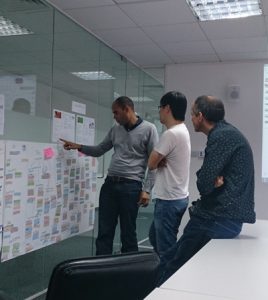Prior to joining Caplin via an internship for my master’s program in Human-Centred Systems at City University London, I had spent several years working in front-end Web development, application design, and Web project management. Whilst I incorporated various forms of formative and summative research and evaluation in many of my projects to help ensure a user-centred design, I had never found the need to research and create personas. And to be honest, I was never convinced personas were worthwhile.
Personas are fictional representations of a product’s users based on real information collected directly from talking with and/or observing users (the ideal), or collected from other sources such as analytics, social media, clients, etc.
At City University I created my first personas for a project based purely on observational data. Even though I understood the intended purpose of personas, I wasn’t convinced my personas were as accurate as they could be.
So when I came to work at Caplin and was given the opportunity to work on creating personas for their platform’s new functionality, I was curious to see how the company approached creating personas, as well as how valuable personas proved to be as a tool in user-centred design.
On the surface the process of creating personas is simple, although it can be time-consuming. We began by performing background research on the targeted user group and developing a set of questions to ask in a semi-structured interview setting. Then we recruited volunteers from our targeted user group to interview either via Skype video calls, phone calls, or in person over a cup of coffee. Our goal was to make the interviews informal and conversational, keeping in mind that most people love to talk about their work, and their interests and preferences, which was exactly the information we were after.
While one person asked the questions, another would take copious notes and chime in with more questions when needed. The notes were collected and organised by question. Once all data was collected from a sample of users, the data was colour-coded, printed out on paper, and then cut into individual pieces of data that was used to perform a process known as affinity diagramming.
Affinity diagramming is a tool used to code, group and organise data in meaningful ways. With our data from a good sample of users, and the analytical eyes of UX designers and researchers, and technical architects, we were able to create four very distinct personas.
I found the process comprehensive, the interviews very interesting, and the final outcome rewarding. The best part was watching our technical development staff read and discuss the personas with great interest. By researching and carefully constructing personas based on real users, we were able to offer our development staff insights into our users they may have never imagined on their own. Now when the team discusses whether or not to add in a new functionality or feature, they can consult our personas and more confidently decide what to include or exclude.
The entire experience convinced me of the power of personas and I plan to utilise what I have learned at Caplin in creating personas in my future user experience work.

